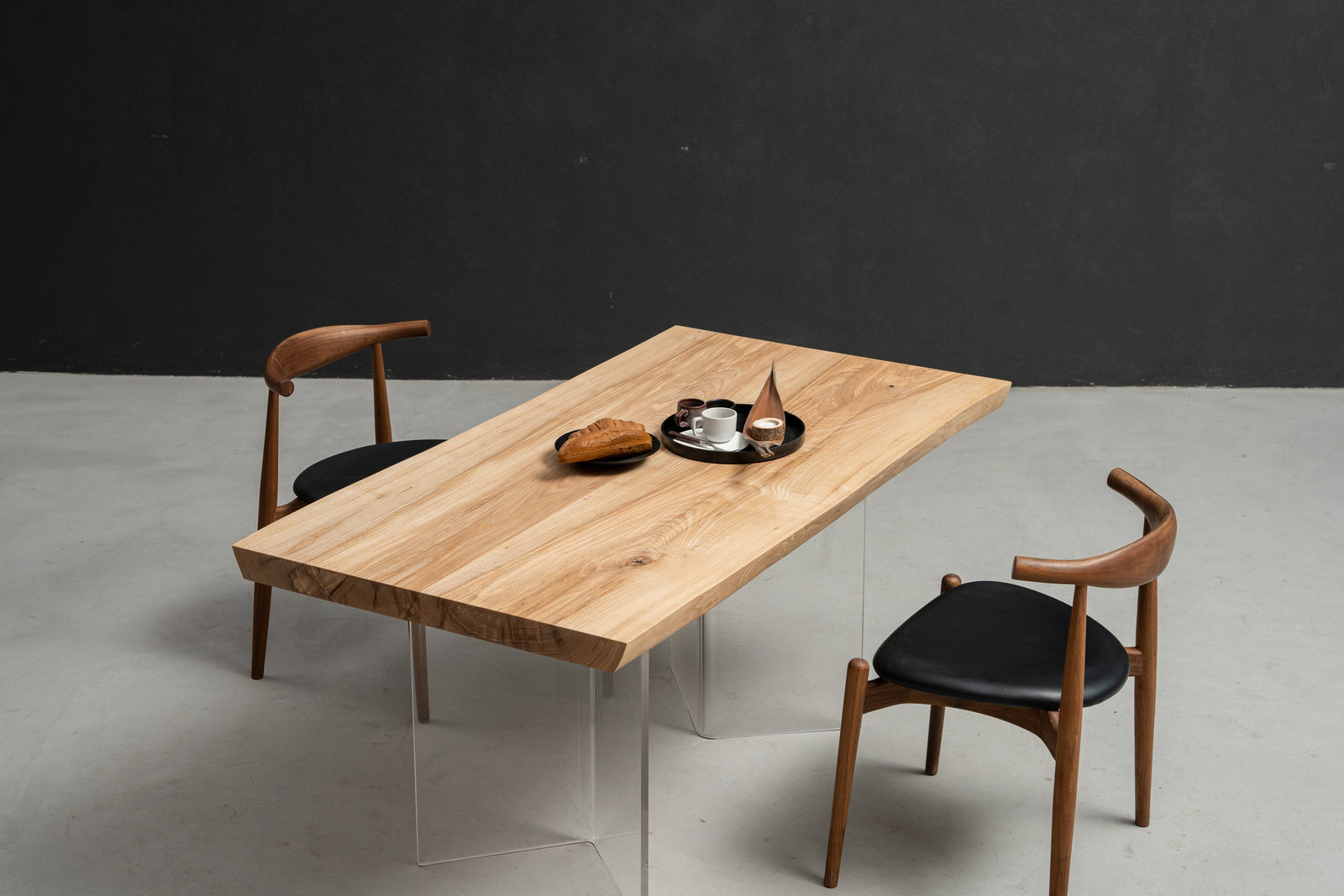Inflation is currently a dominant force, reshaping the U.S. economic landscape. Its tentacles stretch far and wide, influencing every aspect of our daily lives, from the price of groceries we pick up at the supermarket to the amount we pay at the gas pump. The furniture market, too, has not escaped its reach. With costs steadily climbing and consumer priorities undergoing a significant shift, both buyers and manufacturers find themselves in a position of reevaluating their strategies. Amidst all this, a question lingers: does inflation mean that custom furniture is no longer a wise choice? Let's dig deeper and analyze this.
How Inflation is Driving Up Furniture Prices?
Inflation, at its core, chips away at our purchasing power while simultaneously pushing up the cost of goods. The furniture industry has been particularly hard-hit. As per the data from the Bureau of Labor Statistics, the Consumer Price Index (CPI) for furniture and bedding has witnessed a remarkable surge, and there are several factors at play.
1. Supply Chain Disruptions
Global events, whether it's a natural disaster in a key manufacturing region or geopolitical tensions, have had a domino effect on the furniture production and delivery process. Production has slowed down, shipping delays have become the norm, and the cost of raw materials has skyrocketed. For instance, a factory in Southeast Asia that supplies a significant amount of wooden components for furniture might face disruptions due to flooding, leading to a shortage of those components in the U.S. market and driving up prices.
2. Material Price Hikes
The prices of essential materials like lumber, steel, and resin have gone through the roof. Lumber, a staple for wooden furniture, has become much more expensive due to limited supply and high demand. A simple wooden dining table that used to be affordably priced now costs significantly more. And for those unique epoxy river tables that have gained popularity in recent years, the increased cost of resin means a higher price tag. We've seen firsthand how these material price hikes have affected the cost of custom pieces.

3. Labor Shortages
The labor market has also undergone a transformation. A shrinking workforce, perhaps due to an aging population or a shift in career preferences, has led to a situation where employers have to offer higher wages to attract and retain workers. This increase in labor costs is then passed on to the consumers, making furniture more expensive at the retail level.
The cumulative result of these factors is that consumers are now shelling out a lot more for furniture. This has left many pondering whether custom furniture is still a viable option in this inflationary economic climate.
Custom Furniture: A Long-Term Investment
At first glance, custom furniture might seem like a luxury that only a select few can afford. However, a closer look reveals a different story. Unlike mass-produced furniture, custom pieces offer a value proposition that extends far beyond the initial cost.
1. Durability & Craftsmanship
Custom furniture is built with longevity in mind. Take, for example, solid oak dining tables. Each table is crafted from high-quality, sustainably sourced oak. Artisans pay meticulous attention to detail, ensuring that every joint is perfectly aligned and every finish is top-notch. This level of craftsmanship means that these tables are not only sturdy but also resistant to wear and tear. They can withstand the test of time, unlike cheap, mass-produced alternatives that might start showing signs of damage after just a few years.
2. Personalization & Functionality
One of the standout features of custom furniture is its ability to cater to your exact needs. If you've always dreamed of having a live-edge walnut table with specific dimensions to fit your unique dining space, a custom furniture maker can make it a reality. Or perhaps you're looking for a resin river table that seamlessly blends with your home's aesthetic. The team of a custom furniture business works closely with clients, understanding their vision and translating it into a beautiful, functional piece of furniture. This level of personalization is something that big-box retailers simply cannot offer.
3. Value Retention
Well-made custom pieces have a unique quality - they retain their value over time. In fact, in some cases, they can even appreciate in value, especially if they are crafted by a renowned artisan. Consider a custom piece. The combination of high-quality materials, expert craftsmanship, and unique design means that it can hold its own in the market. It's not just a piece of furniture; it's an investment in both beauty and long-term value.
Budget-Friendly Ways to Own Custom Furniture
If custom furniture seems like a financial stretch, think again. There are several ways to get your hands on unique, handcrafted pieces without breaking the bank.
1. Work with Local Artisans
Local furniture makers often offer competitive pricing. By working directly with them, you can skip the middleman and potentially save a significant amount. When you choose a local artisan, you're not only getting a great deal but also personalized service. Their team of artisans takes the time to understand your needs and preferences, ensuring that you get a piece of furniture that's truly one-of-a-kind.
2. Choose Alternative Materials
Premium hardwoods like walnut and oak can be expensive. You can opt for alternative options such as reclaimed wood tables. Reclaimed wood not only has a unique, rustic charm but also comes at a lower cost. Bamboo furniture is another great option. It's durable, sustainable, and more budget-friendly than some of the traditional hardwoods.
3. Opt for Modular Customization
Instead of going for a fully bespoke design, you can choose semi-custom options. Many furniture makers offer modular pieces that allow for a certain degree of personalization. You can select from a range of pre-designed modules and customize them to fit your needs. This way, you get a personalized piece of furniture without the full custom price tag.
4. Explore Payment Plans
Many custom furniture makers now offer flexible payment options. This allows you to spread the cost of your dream piece of furniture over time, making it more affordable and accessible.
How Consumer Behavior is Shifting?
The current economic uncertainty has had a profound impact on how people shop for furniture.
1. Versatility is Key
Buyers are now placing a high value on versatility. They want furniture that can serve multiple purposes. For example, an extendable dining table can be adjusted to accommodate more guests during family gatherings or dinner parties. Storage-integrated coffee tables are also in high demand, as they help in maximizing space in smaller living areas.
2. Quality Over Quantity
Consumers are now more discerning than ever. Instead of buying multiple cheap pieces of furniture, they are opting for fewer, high-quality, durable items. A custom piece, with its superior craftsmanship and quality materials, is a perfect choice for those who value quality over quantity.
3. Sustainability Matters
There is a growing awareness and concern for the environment, and this is reflected in the furniture-buying decisions of consumers. More and more shoppers are prioritizing eco-friendly furniture, even if it means paying a slightly higher price. Many furniture providers take pride in offering sustainable furniture options, from using reclaimed materials to implementing environmentally friendly production processes.
Conclusion
Despite the impact of inflation on the furniture market, custom furniture remains a worthwhile investment. Its durability, personalization, and long-term value far outweigh the short-lived savings offered by mass-produced alternatives.
Inflation may be reshaping the furniture market, but one thing remains constant: quality craftsmanship never goes out of style. So, if you're in the market for furniture, don't let inflation deter you from considering custom pieces. Explore the options, make an informed decision, and invest in furniture that will bring you joy and functionality for years to come.

